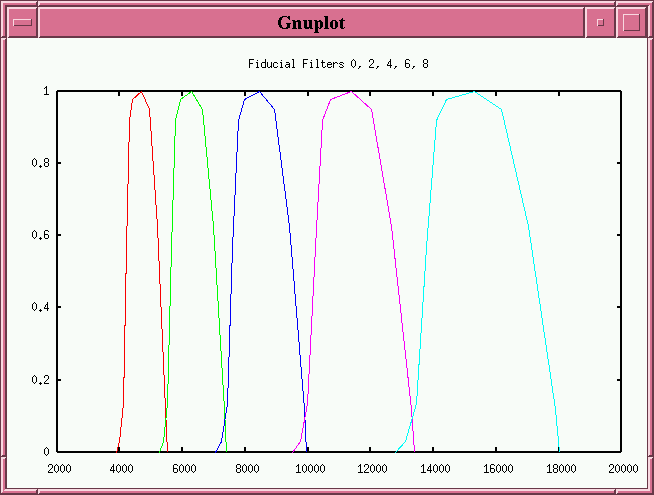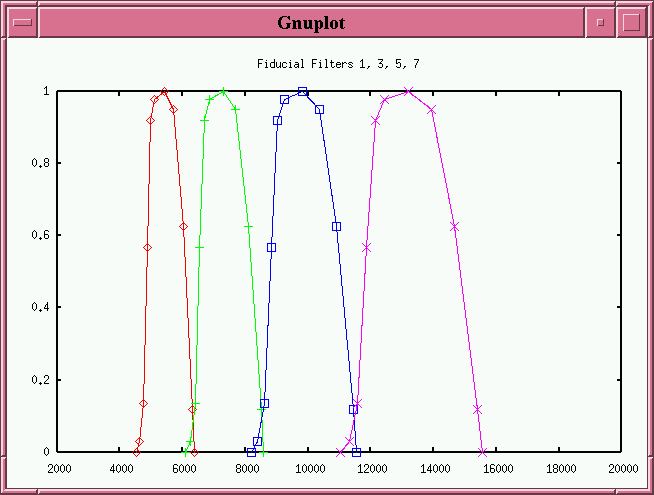
I'm continuing to work on a "pipeline" to simulate photometric measurements made with the SNAP camera. The goal is to identify and characterize systematic errors. My pipeline will be much simpler than the full end-to-end simulator which the SNAP project will undoubtedly construct.
Recent developments:
I used Alex Kim's model of the fiducial filter passbands, based on a B-like filter; filter N has wavelengths which are shifted by 1.16^N. Here they are: the even filters:


To check my work, I made a test: a snapshot of stars in the Northern SNAP Field. I compared the "observed magnitudes" to the "synthetic magnitudes"; the latter do not suffer from any angle-dependent shifts in passband. We expect that
I arbitrarily decided that the SNAP filters would all be designed to have a desired passbands for light incident at a nominal angle of 0.22 radians = 12.5 degrees, which occurs about halfway from the inner to outer annulus which defines the active focal plane. Now, according to our model of passband dependence on incidence, we expect
As you can see, hot A stars have negative residuals -- are brighter than expected -- in the outer regions of the focal plane; cool K and M stars have negative residuals in the inner region of the focal plane. The code is evidently doing the right thing so far.
First, I'll need to add some options to the simulator:
Then I'll start to generate results for noiseless observations. There will come a time when I want make graphs of many quantities versus other quantities, and graphs showing residuals as a function of position on the focal plane, position on a chip. I have looked for tools to generate such graphs, but haven't found any which seem to fit my immediate needs, so I'll probably end up writing some -- that will take several days.
In the more distant future, it will be necessary to add noise to the simulations:
After that, a second round of simulations to verify that all the new features are correct.
The end goal is to determine how many observations are required to identify and characterize the different sources of photometric errors, and how best to arrange those observations.